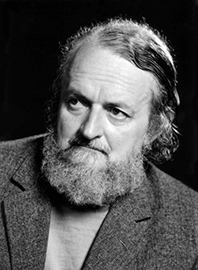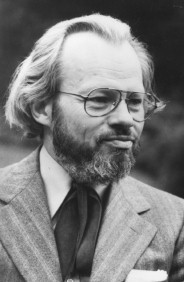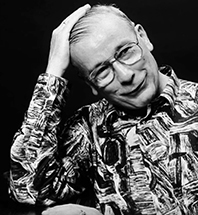Reorientation after 1945 - in search of identity
Unsurprisingly, the vacancies in the teaching staff from 1939-1945 were filled by ideologically loyal NSdAP members, all of whom were then dismissed in 1945-47 as part of the denazification measures. These personnel changes led to a repositioning of composition and compositional training after 1945, in which the reappraisal of once "degenerate" musical styles – above all the Schönberg circle - became particularly important.
Until well into the 1960s, there was no standardised definition of composition training - and thus also its profile. The degree programme usually subsumed the various disciplines of compositional theory under the umbrella term music theory as the main subject. In the post-war period, it was represented by Schmidt student Alfred Uhl, among others, who taught several generations of composers at the school from 1943 to 1979. The teaching activities of Schönberg pupil Erwin Ratz (1945-1969) should also be emphasised during this period, whose pioneering theory of form elevated his teacher's werkanalytic practice to a standard. Under him, the subject of the same name established itself as an essential part of theory lessons. – Among the other teachers from the first decades after the Second World War, Gottfried von Einem, who supervised "counselling courses for advanced composers" from 1963, and Karl Schiske, who earned far-reaching merits by introducing a young generation of composers to the developments of the European avant-garde of the time – despite the rather neoclassical style of his own compositions – and thus significantly opening up the then largely stagnating scene of New Austrian Music in a phase of reorientation.
It was not until the 1970/71 academic year, with the transformation of the academy into a music academy, that the name composition became established for the department and the programme, which was represented in the 1970s to 1990s (among many others) by professors Francis Burt, Friedrich Cerha, Roman Haubenstock-Ramati, Kurt Schwertsik and Erich Urbanner.
New specialisations – and music theory as a full degree course
The decades following the Second World War saw a continuous expansion of the range of courses on offer. In some cases, the new disciplines supplemented the established canon of subjects, in others, new educational paths were created.
From 1957, there was a special course in twelve-tone composition under the direction of Hanns Jelinek, which was later continued by Erich Urbanner and taught as a separate subject until 1980. In the 1980s, the university courses "Tonsatz nach Heinrich Schenker" and "Angewandte Formen des freien Satzes" were also established, which, like all the courses, were primarily aimed at extraordinary listeners. Music theory was finally given a significant boost as an independent discipline in 1987 when Diether de la Motte, one of the most renowned German-speaking music theorists, was appointed to the university: For the first time, a full degree programme in music theory was now possible as an equivalent alternative to studying composition. De la Motte's merit in developing the subject of music theory from a dogmatic theory of composition to a historically orientated and interdisciplinary field of research from the perspectives of science and practice formed the basis of the new Viennese study model, which was finally defined in 1988/89 as the intersection of composition, instrumental performance and musicology.
 Gottfried von Einem
Gottfried von Einem
 Friedrich Cerha
Friedrich Cerha
 Diether de la Motte
Diether de la Motte